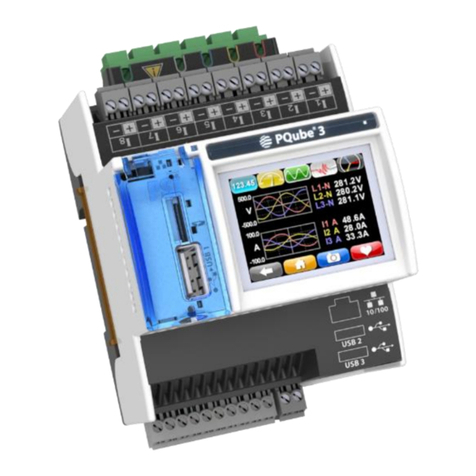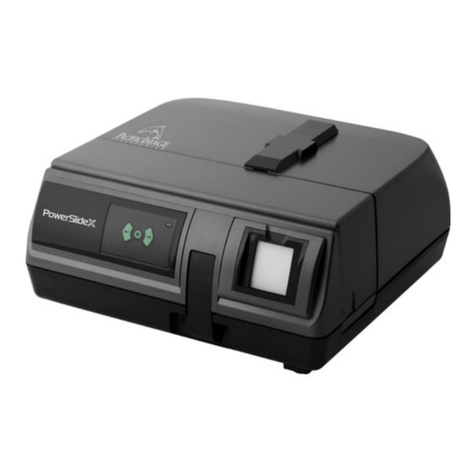PQube 3 Portable Installation Guide.V2_En Page 4 | 13
Introduction
What is the PQube 3 Portable?
The PQube 3 Portable combines the powerful monitoring
and communication capabilities of the PQube 3 Power
Analyzer with the quick connectivity and convenience of a
portable instrument.
It is designed for quick installation and temporary
measurement campaigns. It auto-detects your frequency,
nominal voltage and power configuration. It can be wired
to a local LAN but has also a cell modem ready option - no
communication cables needed.
The PQube3 can be configured and its measurement data
extracted with a USB stick via the USB port next to the
color display of PQube 3. The PQube 3 Portable holds
thousands of events and years of trend data in its internal
flash memory.
If you have remote communication enabled, you can receive reports from the PQube3 as soon as it is powered up.
The PQube 3 Portable sends events and trends directly to the email inbox of your laptop or smartphone - no
software required.
Product Highlights
•Easy to install, wire, and operate
•Ready to plug flexible CTs and fused voltage leads
•Self-powers from the measured voltage (360 to 480VAC)
•Powers from 24Vdc or with an external transformer 120 to 240Vac
•Up to 1-hour (configurable) battery power backup
•Voltage range 100 to 480Vac nominal, Current range (0 to 3000Amps)
•Power Quality Class A IEC 61000-4-30 Ed3
•Monitors AC and DC (4 additional analog inputs)
•Detects High-Frequency transients at 4MHz
•Records 2kHz~150kHz conducted emissions
•Optional 2 environment probes (temperature, humidity, barometric pressure, acceleration)

































